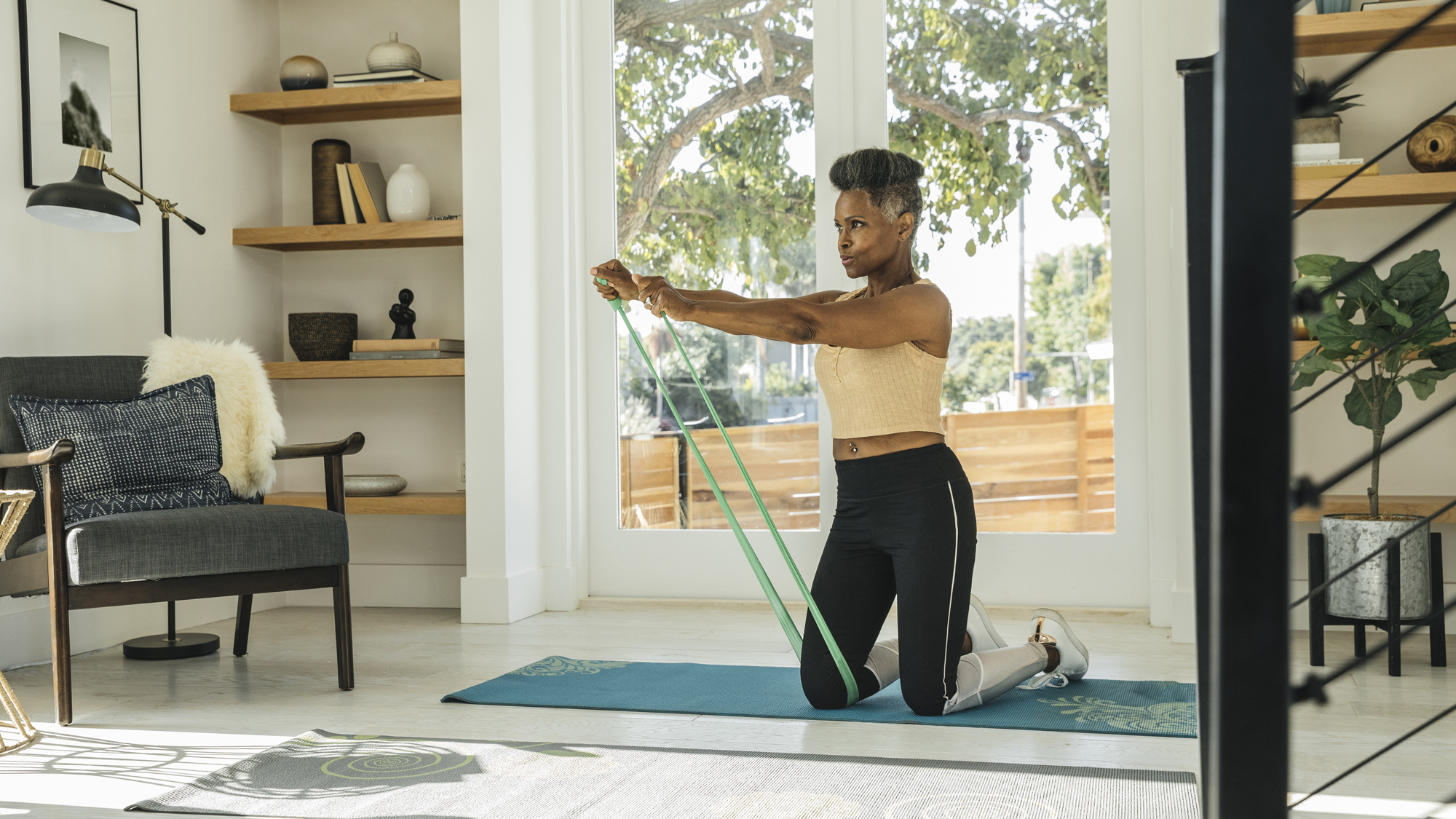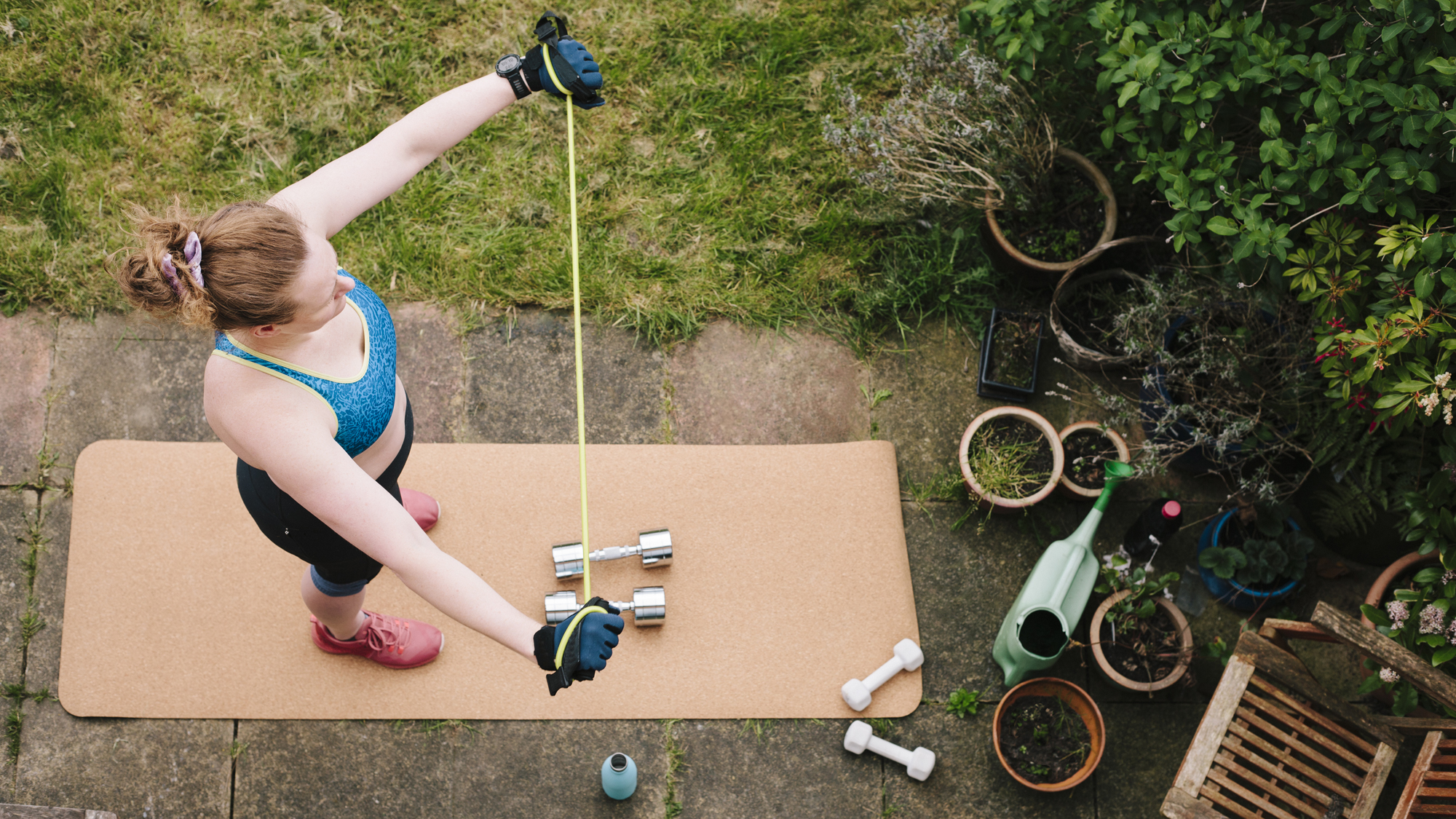Resistance bands vs weights: which is best for building muscle?
Debating resistance bands vs weights for your strength training workouts? We'll help you decide which to use


Many people compare resistance bands vs weights for developing and maintaining muscle mass and strength. The common perception is that you need to lift weights to build muscle, but resistance bands are also an effective way to train.
Weights like the best adjustable dumbbells are a great way to work your muscles at home as they combine several dumbbells, helping you save space. But the best resistance bands are a more affordable, portable alternative to weights.
They’re also an ideal way to maintain muscle mass and strength as we age. Our bodies change through the years and you won’t always feel able to lift a heavy set of weights. Resistance bands also help you stay active without adding extra stress to your joints.
Resistance bands tend to be more versatile as they are available in lightweight sets with beginner-friendly strengths, and you can use them in yoga to deepen stretches. Meanwhile, you can lift weights to build muscle or increase the load during high-intensity cardio exercise.
So, if you're debating resistance bands vs weights, it usually comes down to your specific needs. We'll compare the two styles of muscle-building equipment to help you make the best choice for your fitness goals.

James is an experienced fitness writer with an interest in accessible strength and resistance training. He's keen on workouts which don't require much equipment to build muscle and regularly uses dumbbells for upper body training and resistance bands to deepen stretches and develop strength.
Resistance bands vs weights: what are the differences?
Resistance bands are elasticated rubber bands that you can stretch and pull to add resistance to your exercises. They usually come as a bundle with bands of varying strengths. Generally, the thicker the band, the greater the resistance.
Resistance bands can be attached to anchor points like doors or trees, helping you get a varied workout. Plus, they're great for gradually building muscle after an injury or deepening a stretch in a yoga or Pilates class.
Start your week with achievable workout ideas, health tips and wellbeing advice in your inbox.
As you have to attach the bands somewhere or use closed-loop versions, you can do a limited amount of exercises with them. However, you can still build muscle in a targeted way with the best chest workouts with resistance bands.
On the other hand, you can lift weights for single-muscle isolation moves like bicep curls, use them to increase the resistance of bodyweight exercises like squats, or add them to metabolism-boosting high-intensity workouts.
If you want to train at home, then dumbbells and kettlebells are versatile options to help you build muscle and get stronger. You can buy fixed-weight versions or opt for an adjustable variety that combines several weights into a single unit.
Resistance bands vs weights for strength training

Thankfully, you don't have to spend hours at the gym lifting weights to build muscle. Research in the journal SAGE Open Medicine concluded that "elastic [resistance band] training is able to promote similar strength gains to conventional resistance training."
A separate analysis published in the Archives of Gerontology and Geriatrics also found that "training with elastic resistance proved to be effective for improving muscle strength in 'healthy' and 'not healthy' elderly [participants]."
When it comes to multi-muscle compound moves, the results are more mixed. One study published in the European Journal of Sport Science found that resistance bands were effective for pulldowns, unilateral rows, and stiff-legged deadlifts, but weights were better for squats.
And while resistance bands may see similar results, if you're looking for the fastest way to build muscle, you'll want to gradually increase the weight you're using, a technique known as progressive overload.
At the higher end, you can find tubed and looped resistance bands equivalent to lifting a 40-45lb weight, while free weights like the best kettlebells are available up to around 80 pounds, giving you a more significant resistance range.
Resistance bands vs weights for weight loss
Many people think that cardio exercise like running is the best way to drop pounds. However, when comparing cardio vs weights for weight loss, lifting weights and building muscle can be a more effective and sustainable method.
Your muscles require energy, so the more muscle you have, the more energy you'll burn throughout the day. While resistance bands help you build muscle and improve strength, you'll see greater results using weights for multi-muscle exercises.
By working several muscles simultaneously, you improve the efficiency of your workout and develop strength faster. Resistance bands are a great way to improve gradually, but you can also add free weights to high-intensity workouts.
High-intensity interval training (HIIT) raises your heart rate and improves your metabolism with intense bouts of cardio exercise, but you can make it even more effective by holding a dumbbell or kettlebell in some of the moves.
Then there's high-intensity resistance training (HIRT), which follows a similar technique—short rounds of resistance training (often 30-40 seconds) followed by brief 20-second rest—to build muscle and burn fat.
Resistance bands vs weights: verdict
Ultimately, where you fall on the resistance bands vs weights debate depends on your personal goals. Resistance bands are ideal for beginners and great for exercising while traveling or developing strength following an injury.
Dumbbells and other free weights are generally more expensive and can be harder to store (unless you choose an adjustable version). Still, they're more versatile for building muscle as you can use them for isolation moves, compound exercises, and high-intensity workouts.
And if you invest in weights like kettlebells, you can learn how to do kettlebell swings. This exercise works your whole body, raises your heart rate, builds core strength, and increases your metabolism for all-day fat burning.
Resistance training causes tiny tears in your muscle, and your body needs protein to repair and grow your muscles. Adding the best protein powder for weight loss to your diet can aid your recovery and help you hit your fitness goals.

James is a London-based journalist and Fitness Editor at Fit&Well. He has over five years experience in fitness tech, including time spent as the Buyer’s Guide Editor and Staff Writer at technology publication MakeUseOf. In 2014 he was diagnosed with a chronic health condition, which spurred his interest in health, fitness, and lifestyle management.
In the years since, he has become a devoted meditator, experimented with workout styles and exercises, and used various gadgets to monitor his health. In recent times, James has been absorbed by the intersection between mental health, fitness, sustainability, and environmentalism. When not concerning himself with health and technology, James can be found excitedly checking out each week’s New Music Friday releases.